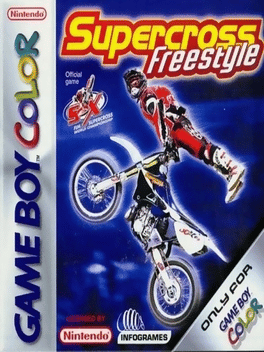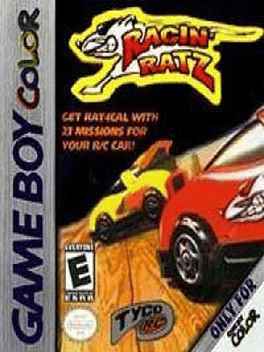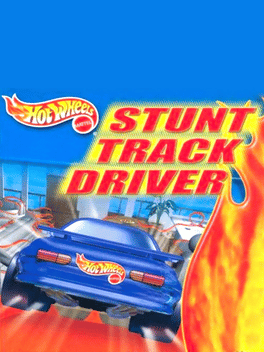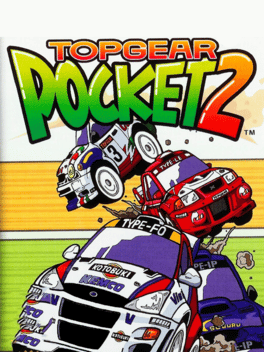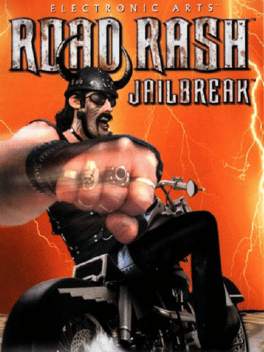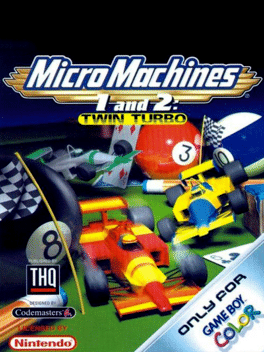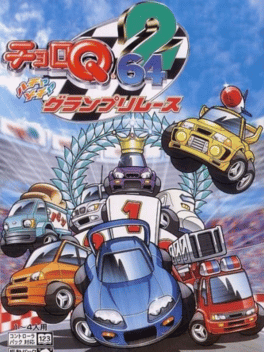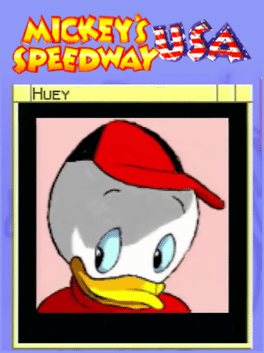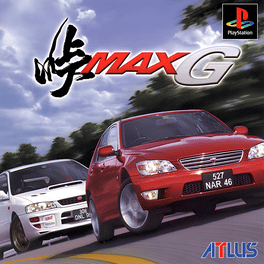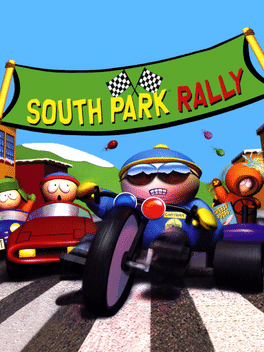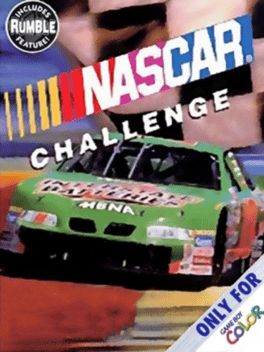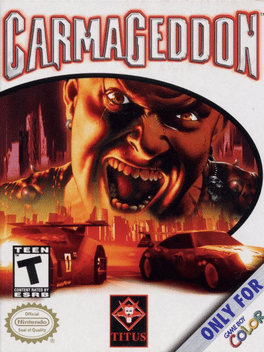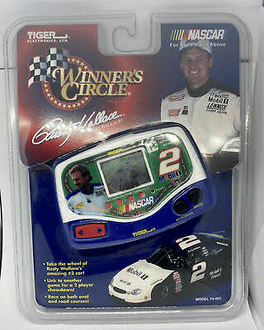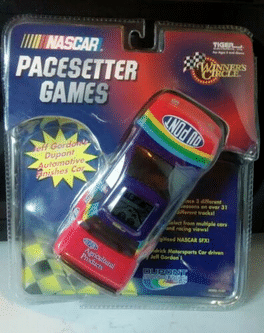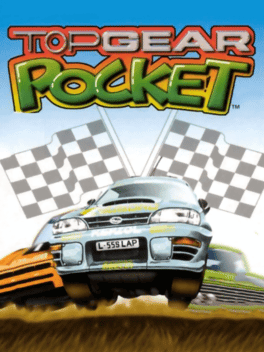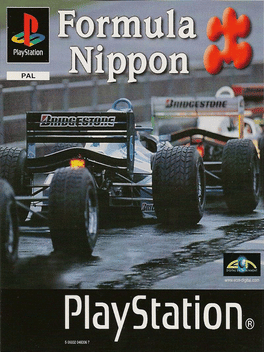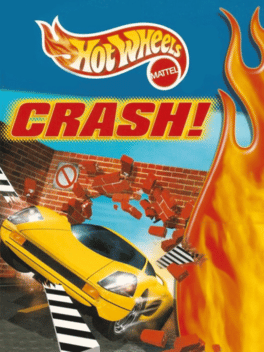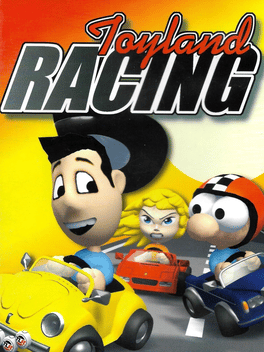New Racing Games - Page 115
-
Polaris SnoCross
2000
-
Supercross Freestyle
2000
Supercross Freestyle
2000
Supercross Freestyle is a dirt bike racing game. The game features three game modes: Freestyle, Supercross and Arcade. Freestyle is all about making impressive jumps and tricks with your bike. Supercross and Arcade are racing modes, where Arcade has different courses and power-ups that can change the odds. The game features 24 different tracks and 16 different tricks. -
Racin' Ratz
2000
Racin' Ratz
2000
A variety of little animals take center stage in this racing challenge that takes you through some unlikely environments. Trek through the living room, Grandma's house, a bedroom, and the garage in your quest for glorious victory. There are 25 missions in all, and the action is spread over 10 huge levels. You choose to play as Chris (a cat) or Betty (a little bird), and then take your character through a slew of puzzles, avoiding hazards and collecting power-ups. Finding the appropriate items will allow you to jump across furniture, shrink your car, or even climb over your obstacles. Smart strategy and quick reflexes will help you unlock an extremely trying boss level where you'll take on either a cat or bird in a head-to-head duel. Sometimes the best things come in small packages, and that's certainly the case in this small-scale racing challenge for the Game Boy Color. -
Top Gear Pocket 2
2000
-
Road Rash: Jailbreak
2000
Road Rash: Jailbreak
2000
star 7The Road Rash series continues with an all new chapter of intense motorcycle combat and racing action. In Road Rash: Jail Break it's up to you to bust the toughest rasher of all time, Spaz, out of jail! To accomplish this, you'll have to join a motorcycle gang and move up through the ranks by succeeding at a variety of challenges and winning races. You also have the option of playing on the right side of the law in Five-O mode, where you are a police officer out to bust suspects and fill your rasher quota. -
Micro Machines 1 and 2: Twin Turbo
2000
This game gives new meaning to the phrase "Take two, they're small." Micro Machines 1 & 2: Twin Turbo literally gives you two games on one cartridge. This is an unconventional arcade-style racer where the tiny vehicles are seen from a top-down perspective. There are no pit stops to plan for, nor is there oil pressure for you to worry about--just motorized mayhem on a miniature scale. Identical in gameplay, each game in Micro Machines 1 & 2: Twin Turbo offers 24 unique tracks that, from your microperspective, seem enormous! You'll race around gigantic breakfast tables, bathtubs, desks, and gardens. With simple gameplay and quirky, colorful graphics, this game should appeal to gamers of all ages. -
Choro Q 64 2: Hacha-mecha Grand Prix Race
2000
Choro Q 64 2: Hacha-mecha Grand Prix Race is a racing game released in 1999 in Japan for the Nintendo 64. It is the sequel to Choro Q 64 (Penny Racers outside of Japan) and is part of the Choro Q series. The game is also compatible with the Game Boy Color game Choro Q Hyper Customable GB, using the GB Transfer Pak. -
Mickey's Speedway USA: Huey
2000
A character unlocked by link to the Game Boy Color version via the Transfer Pak. -
Touge Max G
2000
Touge Max G
2000
A touge-focused drifting racer where players compete one-on-one on narrow mountain passes with realistic handling and an expanded car roster. Modes include King Battle, Time Attack, Story, Gymkhana, and two-player versus, with night courses and customization options emphasizing racing line and drift technique. -
South Park Rally
2000
South Park Rally
2000
star 6.3Choose your character from the cast of the popular 'mature' cartoon South Park, and tear through the streets in this racing game. Your character's vehicle may be a little cart, trike, or box, for example. Weapons include rockets, Salty Balls, Cheesy Poofs, the beloved Cow and even an Anal probe. All of the voices are also included, making it feel more like the real cartoon than a rally game. You can also play an all-on-all 4 player mode. -
NASCAR Challenge
2000
NASCAR Challenge
2000
The thrill of victory and the agony of smashing into another car comes to the Game Boy Color in NASCAR CHALLENGE. Hop in and take on the best NASCAR has to offer including Jeff Gordon, Dale Jarret, and Rusty Wallace. Try to master Topeka, Sonoma, and Seneca raceways in the Practice mode, and when you're ready for some competition, try to survive six laps on any of the tracks. To prevail in the championship, you will have to try to win the pole position on each track and beat the pack to the finish line. Depending on how well you finish in each race, you are awarded points. The driver with the most points at the end of all three races is declared the champion. Can you handle all of the excitement and action in NASCAR CHALLENGE? -
Carmageddon
1999
-
Carmageddon 64
1999
Carmageddon 64
1999
The version of Carmageddon 64 released in Germany has the pedestrians changed to dinosaurs and other prehistoric animals as a censorship measure. -
Top Gear Pocket
1999
Top Gear Pocket
1999
Rally race through the city streets, grasslands and sandy terrain against eight other racers (or a friend) to the finish line. The higher you rank at the end of each race, the more new tracks you open up (including tracks full of ice). Time trial mode also allows you to test the time on each track. -
Formula Nippon
1999
Formula Nippon
1999
This is a race game based on a real open wheel Japanese series called "Formula Nippon" (originally based from F3000). You can make a career progress from Go Kart to Formula 3 and finally Formula Nippon. Four Game Modes are available: Scenario, Arcade, Time Attack and 2 Players. For Go Kart, you have 4 tracks available (2 tracks + Reverse) In Formula 3, you can choose 6 real teams and 14 in Formula Nippon. This two series can run on 5 existing Track (Suzuka, Fuji, Mine, Sugo and Motegi). Race can be played on dry or wet track. -
Hot Wheels: Crash!
1999
Hot Wheels: Crash!
1999
Hot Wheels: Crash! is a Hot Wheels game released for PC in 1999. It was the fifth Hot Wheels video game. The object of the game, as the title states, is to crash cars into buildings and structures in each level in order to earn points, with 100 being the goal. The game includes a total of 12 different vehicles and 25 different levels. There are 3 difficulties, and on each difficulty, there are 6 levels. Once 100 points have been scored on each level on any given difficulty , a 7th level for that difficulty is unlocked, which in turn unlocks a special level afterwards. Once every special level for each difficulty has been fully completed, a final level is unlocked. There were also six downloadable levels available by entering the password "1234", though the downloadable levels are now lost due to the shutdown of the site. -
Toyland Racing
1999
Toyland Racing
1999
The game is unexpected blend of racing and comics. What can be better than toys driving toy cars, even in such great Spanish cities as Madrid, Barcelona and Sevilla. You can drive with your friend in one car through 15 different tracks of the world under the guidance of Mr. Chetty. Here is different difficulty levels and multiplayer is up to 8 players.

